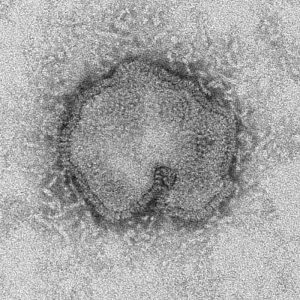Meizhou man the latest H7N9 avian influenza case in China
The Health and Family Planning Commission of Guangdong Province (GDHFPC) has reported an additional human case of avian influenza A(H7N9) in the South China Sea coast province.

Influenza A (H7N9) virus/CDC
According to the GDHFPC, the patient is a 45-year-old man who lives in Meizhou. He is currently hospitalised for treatment and in a critical condition.
To date, 573 human cases of avian influenza A(H7N9) have been reported by the Mainland health authorities, respectively in Guangdong (162 cases), Zhejiang (156 cases), Jiangsu (70 cases), Fujian (58 cases), Shanghai (45 cases), Hunan (24 cases), Anhui (17 cases), Xinjiang (10 cases), Jiangxi (nine cases), Shandong (six cases), Beijing (five cases), Henan (four cases), Guangxi (three cases), Jilin (two cases), Guizhou (one case) and Hebei (one case).
According to the Hong Kong Centre for Health Protection (CHP), avian influenza is caused by those influenza viruses that mainly affect birds and poultry, such as chickens or ducks. Clinical presentation of avian influenza in humans includeseye infection (conjunctivitis), flu-like symptoms(e.g. fever, cough, sore throat, muscle aches) or severe respiratory illness (e.g. chest infection).
The incubation period ranges from 7 to 10 days. The more virulent forms can result in respiratory failure, multi-organ failure and even death. People mainly become infected with avian influenza through close contact with infected birds and poultry (live or dead) or their droppings. Human-to-human transmission is inefficient.
People in close contact with poultry are more susceptible to contracting avian flu. The elderly, children and people with chronic illness have a higher risk of developing complications such as bronchitis and chest infection.